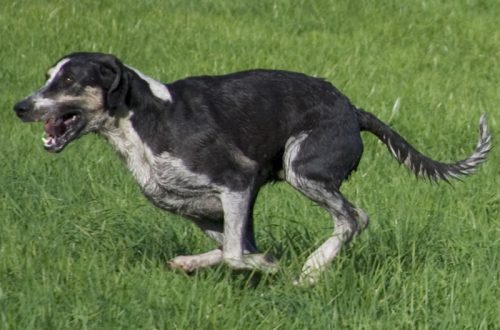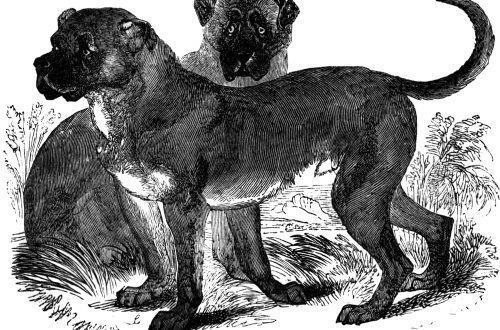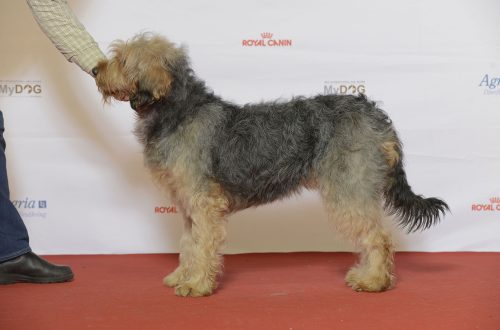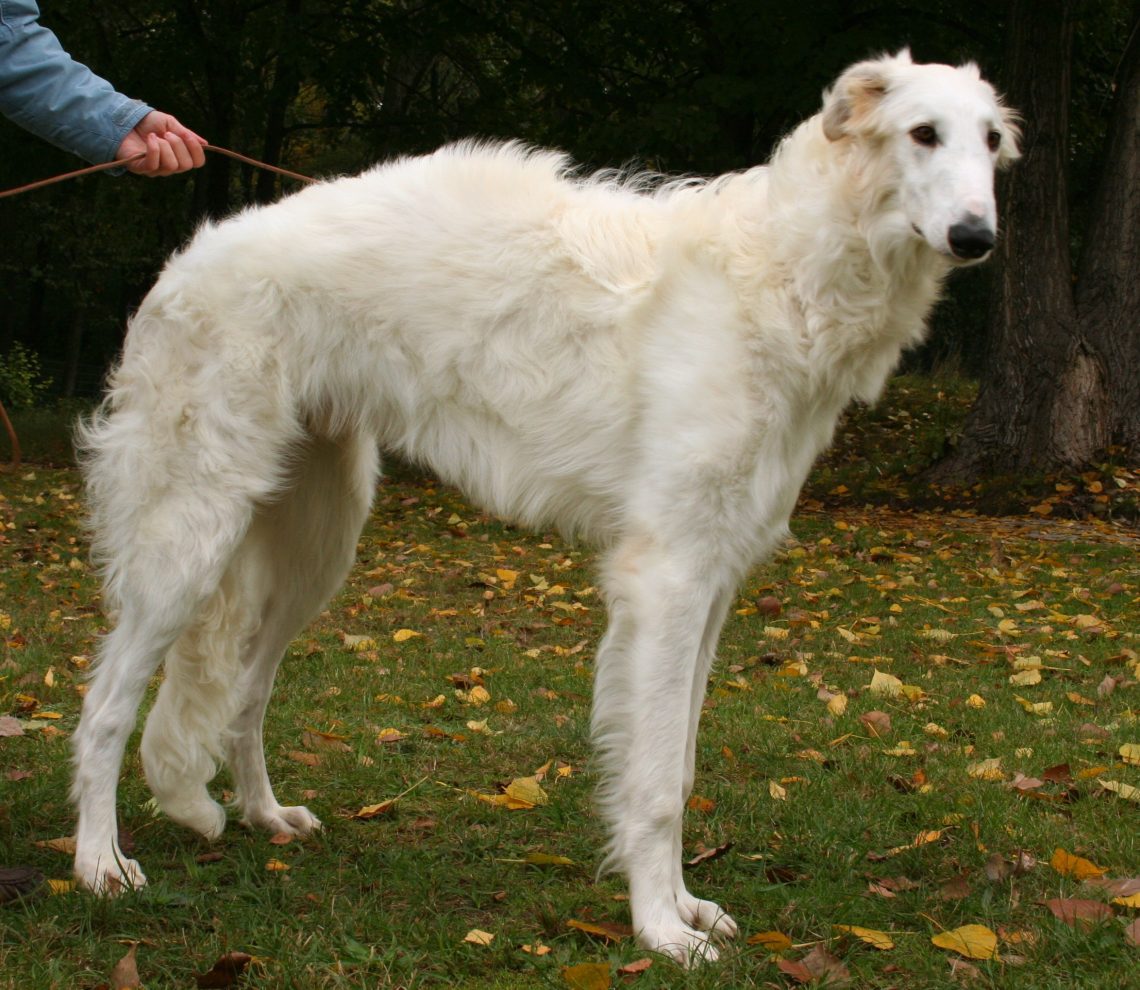
Hound Rosiana
Hevitra ato Anatiny
- Other names: RH
- Characteristics of Russian Hound
- Fotoana ifotony
- History of the Russian Hound breed
- Video: Russian Hound
- The appearance of the Russian hound
- The nature of the Russian hound
- Education, training, racing
- Hunting with a Russian hound
- Fikojakojana sy fikarakarana
- Health and disease of Russian hounds
- Ahoana ny fisafidianana puppy
- The price of a Russian hound
Other names: RH
The Russian hound is a domestic breed of dogs of a black, crimson or gray and tan color. Has increased stamina and a strong musical voice. Most often involved in hunting small wild animals.
Characteristics of Russian Hound
| Firenena nihaviana | Rosia |
| The size | Large |
| fitomboana | 58-65 sm |
| Weight | 25-35 kg |
| Age | 12 ny 15 taona |
| FCI Breed Group | Tsy fantatra |
Fotoana ifotony
- Despite the fact that this is the most popular breed of hounds in Russia, its representatives have not received FCI recognition.
- Increased activity, unwillingness to put up with a lack of free space and the need to share territory with other animals turn Russian hounds into pets that are not the most suitable for urban conditions.
- The Russian hound is easy to train, but has strong leadership qualities, which can only be controlled by an experienced owner with hunting experience.
- The ideal prey for a dog is a fox and a hare. Representatives of this breed are distinguished by great perseverance in the search, therefore they do not lose interest even in the most confusing trail.
- Unlike their relatives – Russian piebald hounds , RGs are lighter in climbing and quick-footed.
- Outside of hunting, the Russian hound is a calm and reasonable creature. True, provided that the dog is systematically and intensively walked, and this is at least 2.5-3 hours a day.
- The voice for Russian hounds is the most important working tool. By changing its timbre and pitch, the animal conveys to the owner information about what kind of prey was found.
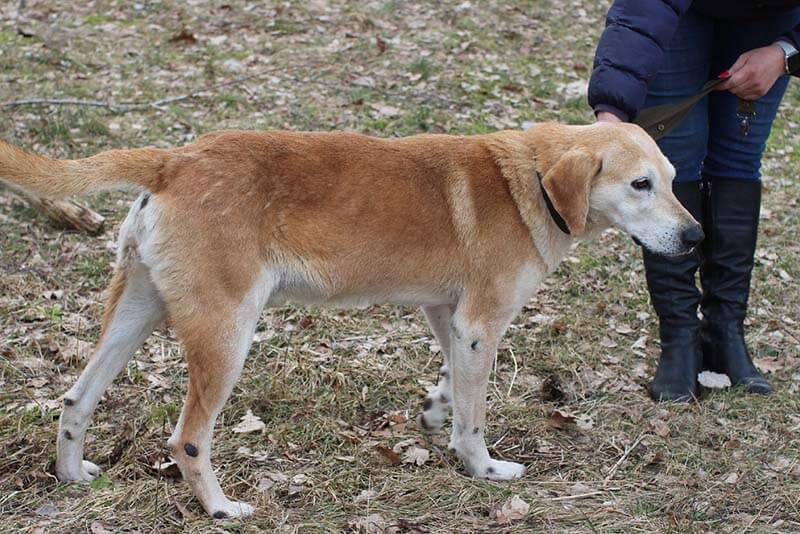
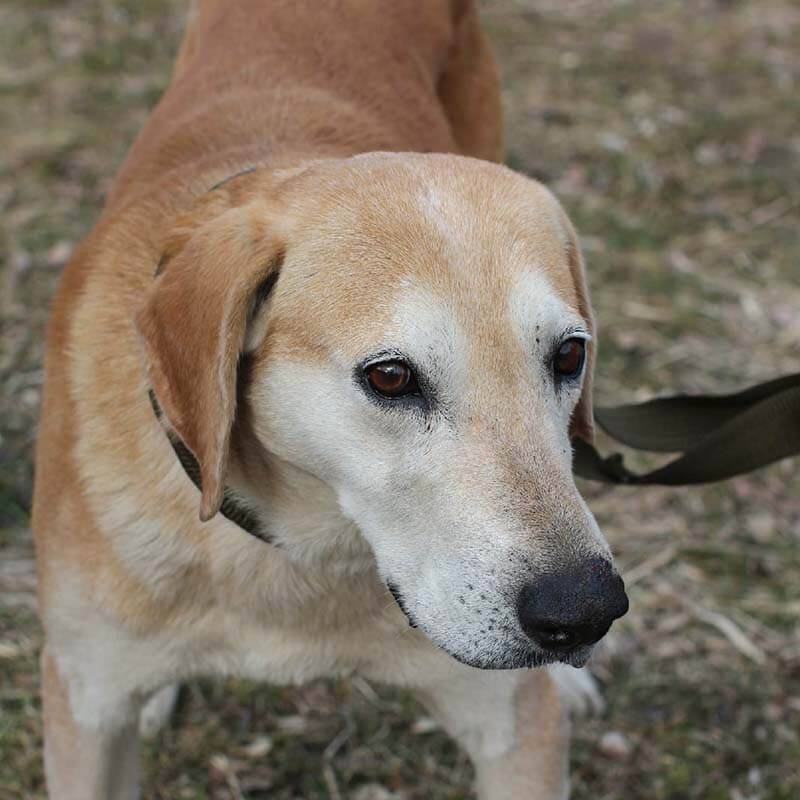
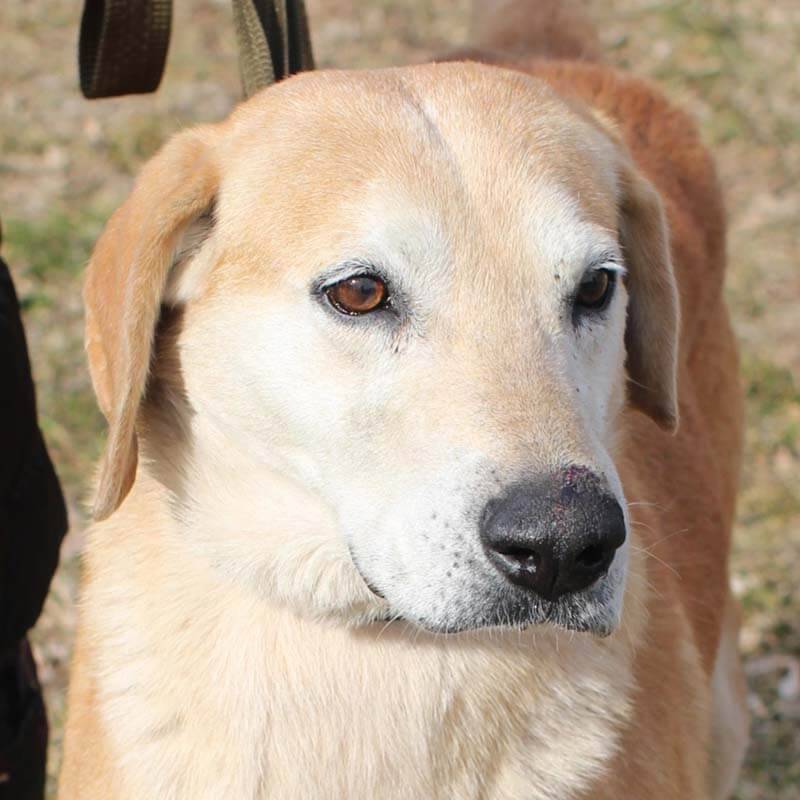
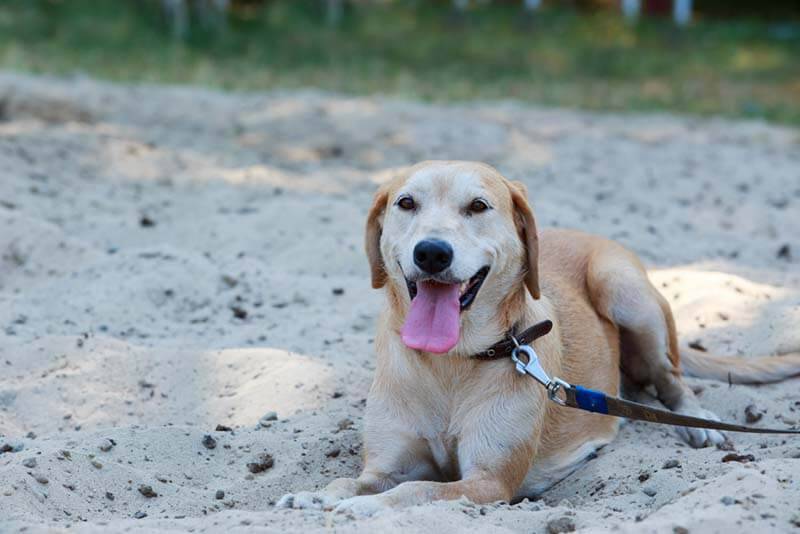
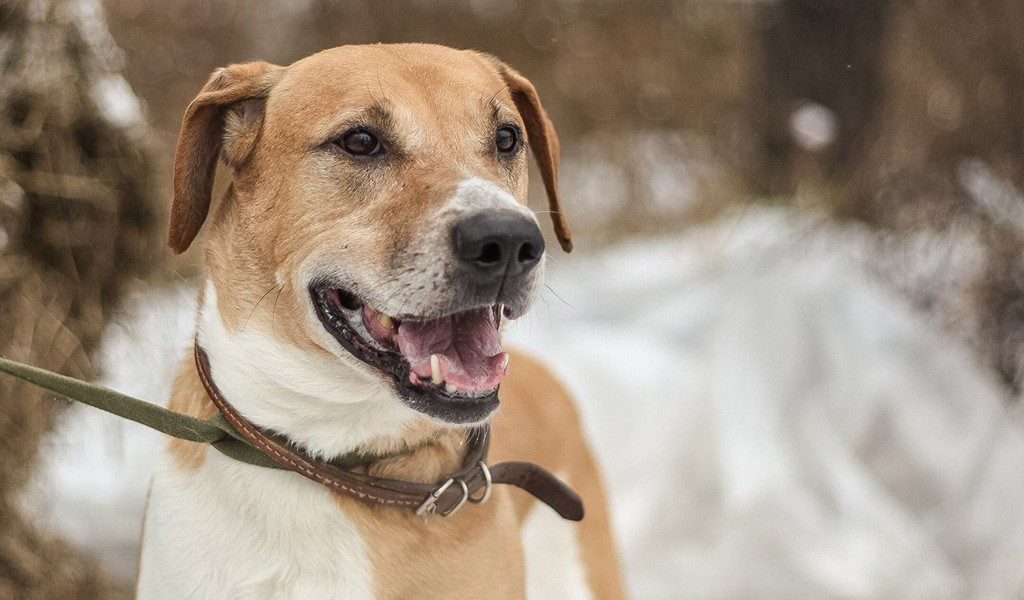
The alika Rosiana is a devoted friend and the “right hand” of any gambling hunter. Energetic, vociferous and fantastically sensitive, this hardworking earner will try to do everything so that your forays into the forest bring not only moral satisfaction, but also quite real trophies. The only thing is that you will have to take for granted the highly specialized breed and not strain its representatives with boring everyday tasks like protecting housing or looking after other animals. Russian hounds will definitely not come down to such an ordinary and risk-free job.
History of the Russian Hound breed
When exactly and how the hounds got to Russia is not exactly clear, although researchers tend to believe that the Tatar-Mongols brought the breed with them. There is also a second version, put forward by A.V. Kamernitsky, according to which the Russian hound is the result of mating imported cops with native huskies. One way or another, domestic breeders began to fully hunt with the ancestors of today’s WG in the 12th century, and in the middle of the 19th century, dogs were already demonstrated with might and main at exhibitions, where they appeared under the name “Eastern Hound”.
By the beginning of the 20th century, the phenotype of the breed was almost formed, but a civil war intervened in the course of breeding research, after which work to restore the number of animals and improve their hunting characteristics had to be started anew. In addition, the case was greatly hindered by the excessive diversity of domestic livestock: in tsarist Russia there was a huge number of lines of hounds, which were partially preserved after the revolution.
Nevertheless, in 1925, at the All-Union Congress of Cynologists, a separate standard was adopted for the breed, which distinguished its representatives from among the relatives in the group. But the year 1939 was truly fateful for dogs, when an official ban was introduced on breeding any type of hounds, except for the Russian and Anglo-Russian (later renamed the Russian pinto ).
As for testing the working qualities of the breed, the first tests to identify the hunting capabilities of Russian hounds were compiled in 1901. True, it was only possible to check in this way the ability of a dog to work in a pack. It became possible to select hounds according to individual indicators only after 1925, when a special set of tasks was developed that made it possible to evaluate the initiative and hunting talents of each individual individual.
Video: Russian Hound
The appearance of the Russian hound
The Russian Hound is a dog of impressive size and strong constitution with somewhat brutal habits. It is impossible not to note the outward resemblance of representatives of this breed with wolves, which is especially clearly seen during the hunt. So, for example, it is typical for a working hound to pursue prey, keeping its head down, which resembles the tactics of a forest predator. The WG is also related to the wolves of the physique – in particular, the conspicuous high front.
Head
Distinctive features of the head of the Russian hound are the general dryness of the contours and the wedge-shaped outline. The dog’s skull is flattened, the eyebrows and the transition to the back of the head are slightly prominent.
Russian Hound Nose
Lobe black, large, distinctly protruding forward. The transition from the back of the nose to the muzzle is smooth.
Nify sy manaikitra
Only a scissor bite is allowed. The teeth should be massive, white and in full quantity.
Eyes
The Russian hound has dark brown eyes with expressive black eyelid edging and a graceful oblique slit.
Manan-tsofina
The reference representative of the breed has a thin hanging ear cloth, planted above the line of the eyes. The ear itself should be triangular in shape and fit snugly against the head.
vozony
The length of the neck of the Russian hound is equal to the length of its head. In general, this part of the dog’s body looks dryish and muscular at the same time.
filanjana
Representatives of this breed are real strong men with harmoniously developed bones and dense dry muscles. The chest of the Russian hound is wide, strongly lowered downwards. The back is massive with a short, slightly convex, but strong enough loin. The croup is elongated and sloping, the line of the abdomen is well chosen.
rantsambatany
The legs of the Russian hound are characterized by muscularity and moderate boneiness. In a healthy purebred individual, the fore and hind limbs are set parallel to each other and have good articulation. The elbows of the animal look back, the metacarpus and metatarsus are set almost vertically. The angles of the humeroscapular joints (100-110°) and hocks are also well pronounced.
The shape of the paws of the Russian hound is oval. The fingers are arched, collected in a large lump.
Russian Hound Tail
The correct rut (tail) should be thickened at the base, and its thin tip reaches the hock joint or is located higher by a centimeter or two (the latter feature is typical for males). In an excited animal, the tail may rise to the line of the back, but not higher.
Wool
The coat on the body of the dog is double, but heterogeneous. So, for example, on the ears, head and legs of an animal, the hair is short and less dense. Around the neck and on the hips, the dog is noticeably richer and more magnificent. The base and middle of the tail of the Russian hound are covered with medium length hair, the tip is short.
Color
A typical Russian hound is a black-and-white, crimson or grayish and tan dog. The traditional color of tan marks is pale yellow or whitish. Sometimes there may be small white marks on the neck and legs, which is allowed by the standard.
Ny kilema sy ny fanavakavahana tsy mendrika
In order not to be admitted to exhibition competitions, it is enough for a Russian hound to have wool of a mouse or coffee color, suffer from heterochromia or have a depigmented iris. The absence of a canine or molar M1, M2, as well as any deviation from a scissor bite, also lead to disqualification.
Serious malformations that do not exclude the animal from the ranks of the contestants, but reduce its chances of a good mark to zero, include:
- short-legged or long-legged;
- stretched or shortened body;
- dry or damp constitution;
- color with bright red tan, specks, as well as large white or dark spots on the ears, forehead and under the eyes;
- shaggy, wavy coat without undercoat;
- overgrown muzzle;
- pronounced snub nose;
- ears that are too large, shaggy, on cartilage or rolled into a tube;
- a long neck with a chin;
- absence of an incisor or four or more premolars.
Fairly common and serious shortcomings are considered: a narrow, underdeveloped chest, inverted hocks, small articulation angles, as well as a tail turned sideways, too short or with a suspension.
The nature of the Russian hound
The Russian Hound is a hardworking dog with a rather calm and at the same time strong character. These gambling trackers clearly distinguish between hunting and everyday life, in connection with which they demonstrate two diametrically opposed lines of behavior. So, for example, at home, the Russian hound reincarnates into a calm, balanced pet, which cannot be penetrated even by the most harmful children’s pranks. As a result: the animal can be fearlessly left to look after the baby, if it is necessary to urgently leave, reduce the fire on the stove.
Relations between Russian hounds do not stick only with cats, decorative dogs and other small living creatures. Like any hunting breed, the RG tends to see prey in every four-legged creature. Hence – the race for homeless purrs during walks, as well as constant conflicts with Pekingese, toy terriers and other midgets of the dog world.
By and large, Russian hounds are unsuitable for watchdog activity, although they are capable of giving out a harmless “Woof!” towards an insolent attacker. However, given the size of the breed, such a sluggish attack can also be effective. And yet, acquiring a Russian hound in order to get a devoted watchman is pointless. The only type of activity to which the dog is given entirely and without a trace is hunting. All other duties that any outbred watchdog is able to perform are stubbornly ignored by the hound.
Education, training, racing
Russian hounds have high intellectual indicators: they are quick-witted, intelligent and do not need numerous repetitions of the same command. Moreover, the performance of the breed and its spiritual unity with the owner during the hunt have become a legend. On the other hand, inside each dog a cunning dominant is sensitively dozing, ready at any moment to change the requirements of his own educator. The inborn workaholism of the breed slows down training a little – in order to feel in good shape, the Russian hound needs to give all the best physically. Before you start training, take your pet outside and let him practice detective work and chasing. There is no point in training with a Russian hound that sleeps and sees when it is taken out for a walk. The dog will stubbornly shirk from work until he begs for outdoor training.
They start preparing the Russian hound for hunting at 3-4 months. At this age, the puppy is instilled with the correct manners and accustomed to the sound of a hunting horn. It is advisable to lock the baby before each meal and blow the bugle. Gradually, the Russian hound will catch the connection between the sound of the horn and the bowl of food, which will help her respond to the signal at lightning speed when hunting. It is equally important to restrain the natural instincts of the dog, training her restraint and politeness. In particular, you should not let the puppy immediately rush to the bowl of food: a well-mannered baby should start eating only with the permission of the owner. Of course, it is fundamentally wrong to drive an animal away from delicacies by walking it with an oar, as was done in the old days, but it is still necessary to slow down the impatience of a varmint. Otherwise, when the puppy begins to fully hunt,
As for the breed, the standard methods for the entire beagle group are used here. By the way, you can take a puppy to the forest no earlier than he is 10 months old. Until this age, Russian hounds can do little. It is more reasonable to carry out the first hunting lessons along the black trail, in the early morning, while the animal trail has not cooled down and still has a strong smell. If you plan to work with a flock of hounds in the future, the puppy must be taught in advance to work in a bow (in a paired collar). It will be easier to do this if an experienced adult hound already lives at home. In this case, just take the dogs for walks on the same leash. An adult animal will take over the control function and will correct the behavior of a younger and more adventurous relative.
Important: before comprehending the intricacies of chasing, the pet must learn how to perfectly execute commands such as “No!”, “Stop!” and “Stop!” The dog has the right to take off in pursuit of the beast only at the signal of the owner. A Russian hound that doesn’t obey orders and decides on its own when and whom to pursue will not become a good hunter and will most likely get lost in the forest on one of the very first outings.
Be sure to take into account the innate craving of the breed for cattle breeding. Ideally, a dog should not consider domestic animals as a substitute for forest prey, but such indifference to birds and cattle is always the result of education. There is only one way to teach a Russian hound to calmly react to domestic animals: by settling it in a peasant farmstead, in the immediate vicinity of a barn and a chicken coop. However, the method does not always work, especially if the pet has already managed to taste a domestic goose or duck before.
Hunting with a Russian hound
The task of a hunting dog is to smell the beast, scare it away and drive it closer to the owner so that he can make an aimed shot. In addition, the Russian hound must “inform” the hunter by voice about what kind of prey it has found and how the rutting process is going. To do this, the breed skillfully changes the tone and intensity of barking, which among its representatives is distinguished by its special purity and musicality.
The obligatory working qualities of the Russian hound are naming (instant reaction to the call of the owner), climbing (the ability to work in bushes and thickets) and non-fatigue (endurance). In particular, a well-trained Russian hound can chase a hare throughout the daylight hours, only occasionally leaving for short breaks. An important feature of the breed is considered to be its viciousness towards the beast. This is sitting at home, in an aviary, the Russian hound – meekness and obedience itself. On the hunt, the dog transforms into a cruel and merciless fisherman who sees nothing in front of him but a “living target”. Extremes, however, are also undesirable, therefore, even during a gambling chase, the Russian hound should not lose his mind and get overexcited. Fussiness in movements, nervousness – all this suggests that
According to tradition, foxes and hares are hunted with a Russian hound, although some individuals are able to drive a larger animal like a wild boar or an elk. There are two equivalent types of hunting with Russian hounds: motionless and running. In the first case, the hunter stops in a place convenient for making a shot and waits for the dog to start chasing the prey in his direction. In the second, both the hound and the person are constantly moving in search of the beast. By the way, with young individuals who do not have working experience, it is better to practice running hunting in order to be able to control the pet and correct the mistakes he made.
Despite the name-calling for which the breed is famous, many Russian hounds have problems with the return, that is, the animal is fond of chasing prey, does not respond to the horn signal and is lost in the forest. Later, the dog can return to its original positions, guided by its own trail, so in the first hours after the disappearance of the pet, you should not leave the hunting place. Collars with built-in GPS can also help in finding “lost” ones, although even such electronics do not give a 100% guarantee that the rescue operation will be successful.
Fikojakojana sy fikarakarana
Historically, Russian hounds were kept in very ascetic, if not Spartan, conditions. Most of the time the animals spent in the open air, resting in log kennels only in the most extreme frosts. However, even modern breeders are of the opinion that heated rooms have a negative effect on the temperament and working abilities of dogs, turning tireless hunters into pampered and fearful of the cold minions. Based on this, the booth made of tightly fitted boards, insulated and equipped with a curtain that prevents cold air from entering the kennel, remains the optimal place of residence for the Russian hound. Hay or dry leaves are suitable as bedding.
The safest option is a booth installed in an aviary with a canopy. Dogs are placed in such conditions if the fences on the territory of the infield are not strong enough and high. Moreover, it is better to make the lattices of the aviary from wood or to tighten the space between the supports with a strong metal mesh, since the teeth of Russian hounds straighten out with a classic chain-link. An alternative to an aviary can be a log kennel, but this is not the healthiest option. Dogs that constantly live in a poorly lit room (meaning a lack of sunlight) develop rickets. It is much more reasonable to cut a spacious hole in the wall of the barn and attach an aviary to it, where in good weather the dog will be most of the day.
For pregnant, lactating females, as well as puppies of the Russian hound, it is necessary to build separate enclosures.
It is more expedient to cover the floor in the aviary with sawdust to make it easier to clean. At the same time, you can throw a few shovels of gravel at the entrance: walking on the pebbles will help the hound’s paw pads to harden, which will reduce their sensitivity. The minimum dimensions of an open-air cage for one dog are 3×3 meters.
It is recommended to walk the Russian hound at least three times a day. Moreover, if you take your pet to crowded places, take care of the muzzle – it is not typical for hounds to attack people, but it is better to play it safe. Also, buy long and short leashes to make it easier to control the animal on the run.
Russian Hound Hygiene
The lush, dense dog of Russian hounds does not need thorough combing, but systematic cleaning with a damp mitten and a stimulating massage will not hurt the dog. It is not necessary to set aside time for these procedures every day, although the more often you brush through the pet’s coat, the more elegant it looks. Full washing with the use of shampoos and conditioners in the life of the Russian hound should also be given a place. Bathe your dog in the warm season (the hound will have to dry outside) and when his coat really looks dirty. In winter, the back and sides of the pet can simply be rubbed with snow, which “pulls out” dead hairs and dust well. Well, in the summer it is better to swim with a hound in a river or lake. The main thing is not to forget to rinse the animal with running water afterwards.
Regularly check the cleanliness of the dog’s ears by removing excess wax from the ear canal with a napkin – both veterinary lotions and folk remedies like boiled and cooled vegetable oil will work. After hunting, be sure to examine the surface of the hound’s paw pads. If splinters are found – which happens quite often – they should be removed, and the wounds and cracks should be treated with any antiseptic and smeared with cream. Inspection of the oral cavity and interdental spaces, in which fragments of bones and wood get stuck, is also a mandatory item in the care of the Russian hound. And of course, we are vigilantly watching our eyes, removing debris and mucous lumps from them with a cloth dipped in strong tea or chamomile decoction.
Important: workers who regularly go hunting for individuals must be vaccinated against piroplasmosis and other infections carried by ixodid ticks. An animal should be vaccinated a month or two before the onset of the hunting season. For additional safety, you can also use drops that repel blood-sucking insects, including fleas and ticks.
sakafo
Russian hounds do not make a cult out of food and calmly absorb everything that appears in their bowl. Of course, no dog will refuse the proposed delicacy, but constantly thinking about how to beg for another delicacy is not typical for representatives of this breed.
The basic diet of the average hound should consist of proteins, fats, carbohydrates and contain a sufficient amount of vitamins and minerals. Lean meat, ocean fish fillets, offal and chicken eggs (boiled or in the form of an omelet) act as the main nutritional and building material. The body of the Russian hound can get the required amount of fat from butter and sour cream. It is also useful to season dog stew with melted beef fat, which, unlike pork, is easily digested.
The carbohydrate part of the hound’s menu is cereals – buckwheat, rice, oatmeal, corn. Usually their share in the diet is calculated according to the principle: 15 g of porridge per kilogram of animal weight. From time to time it is allowed to treat the pet with rye crackers, which can be soaked in meat broth for a change.
The Russian Hound can get the vitamins necessary for health and a fulfilling life from the following products:
- carrots (vitamin A);
- egg yolk (vitamin D);
- liver (vitamins K, B2, B5, B6, B9, A);
- seasonal greens (vitamins K, C);
- fruits and vegetables (vitamin C and others);
In addition to vitamins, the animal’s body needs mineral supplements, which include micro and macro elements such as iodine, sodium, potassium, calcium, phosphorus, sulfur and copper. However, ideally, the vitamin-mineral complex is selected only after the dog has been examined by a veterinarian.
Health and disease of Russian hounds
How healthy a Russian hound will be depends on its pedigree. Unfortunately, many owners of working individuals still continue to experiment with breeding and crossing, which leads to the production of frail offspring. If we talk about the typical ailments of the breed, then they include degenerative myelopathy, hip dysplasia and malignant hyperthermia (occurs as a response of the body to anesthesia). Some individuals may manifest such a rare disease as myositis. In addition, Russian hounds have sensitive eyes with a congenital predisposition to conjunctivitis.
Ahoana ny fisafidianana puppy
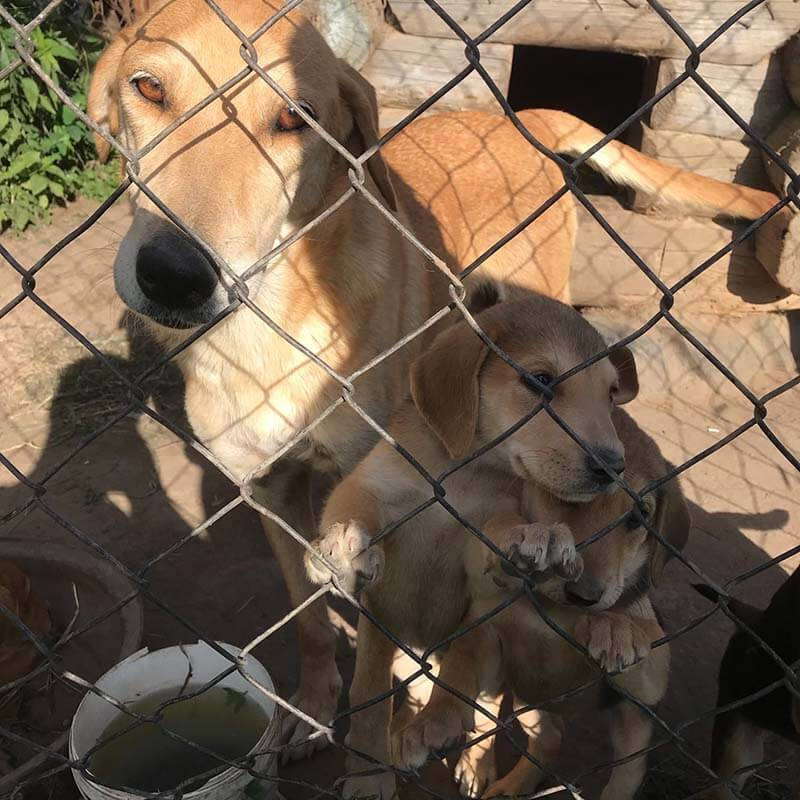

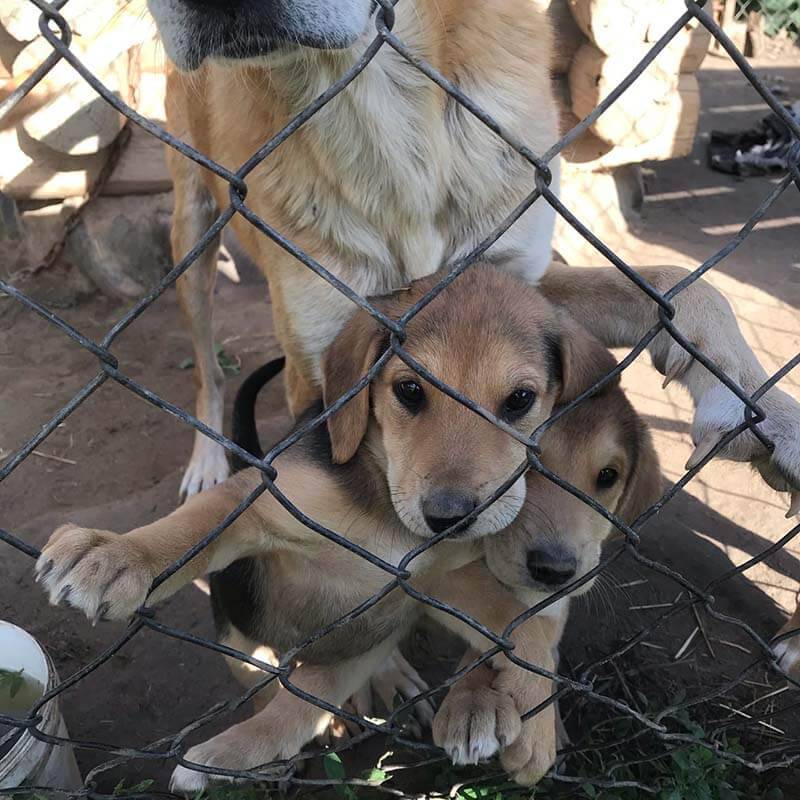

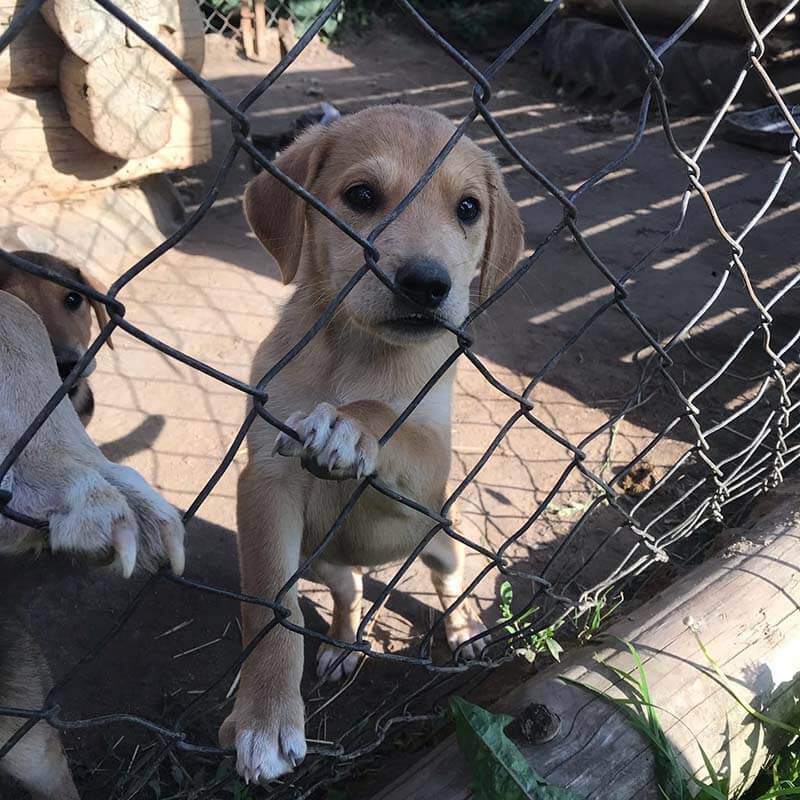

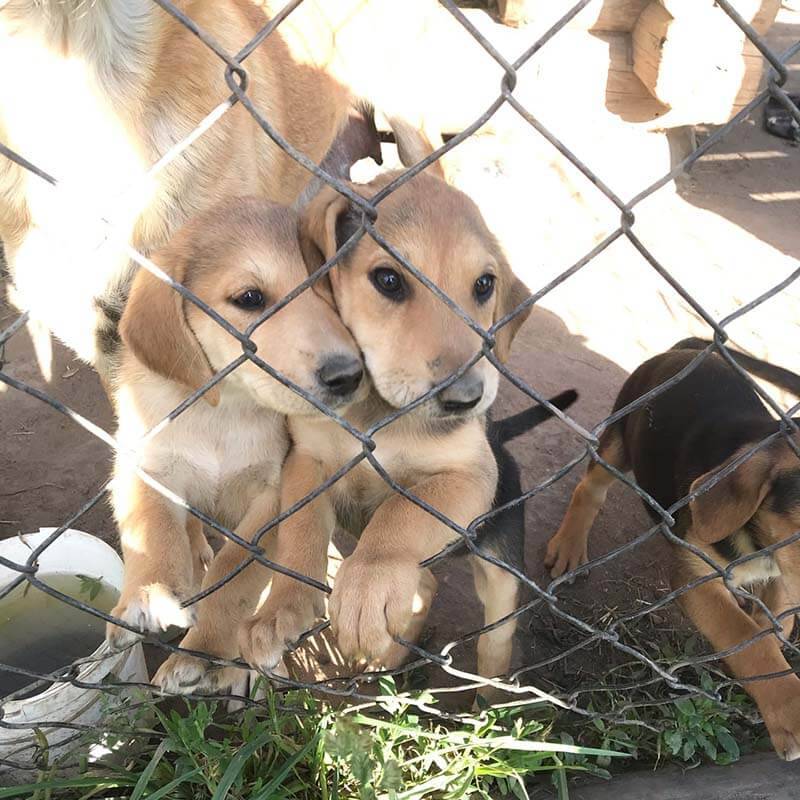

- Try to find out from the seller as much information as possible about the puppy’s parents: how old is the vyzhlovka (bitch), does she have working and exhibition diplomas, are there individuals with a penchant for cattle breeding and silent people who do not give voice on the hunt.
- Specify how many births the bitch had. The best option is litters from the second to the fourth. An earlier or later offspring is the likelihood of getting sickly and weak puppies.
- Try to get the largest and most active baby from the litter – this is a clear leader who, as he grows up, will become a good hunter.
- Arrange a thorough examination of the Russian hound puppy: a littered rut (tail), a pronounced bulldog or bridle (when the upper jaw is longer than the lower) are good reasons not to make a purchase.
- If you are afraid to make a mistake and not notice the physical defect of the puppy, buy 5-6-month-old teenagers. At this age, all exterior flaws are already clearly visible. In addition, the individual character traits of matured Russian hounds are better defined than those of two-month-old babies.
- If there is an opportunity to visit the vyzhlovka and her offspring in the first days after birth, do not miss the chance to test the puppies for sharpness of instinct. To do this, place the cubs at some distance from the mother and let them get to her nipples on their own. The puppy that first smells milk and crawls to the bitch is considered the owner of the most subtle instinct.
The price of a Russian hound
A puppy of a Russian hound without a pedigree costs about 150-200$. Often such babies are sold by hunters who decide to tie their own working individuals, but for some reason did not want to deal with the preparation of the necessary documents. The price tag for a puppy with a metric and certified parents is usually twice as high: 130 – 180$.
There are also enough ads for the sale of adults on the Web. For example, an experienced Russian hound, who has managed to participate in several hunting seasons, but does not have documents confirming her breed, will pull on 80-90$. At the same time, a dog with a working / champion diploma and an elite pedigree will cost at least 250$, or even 400$.





